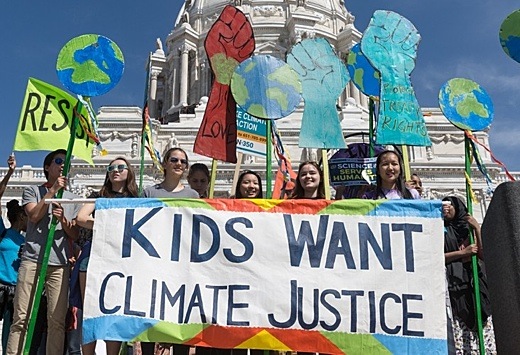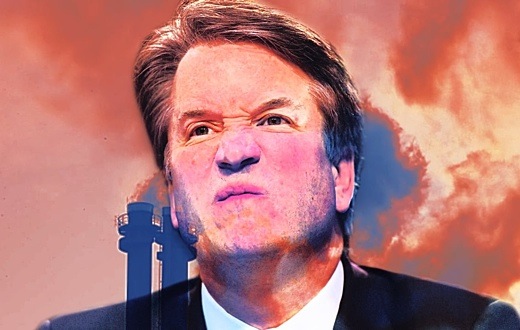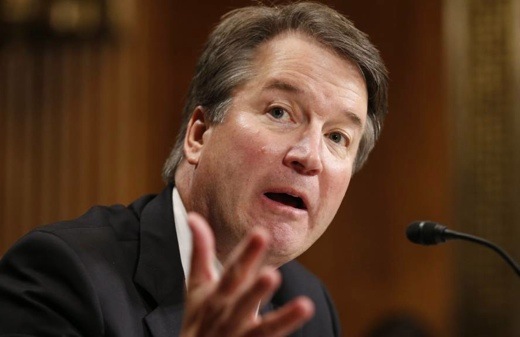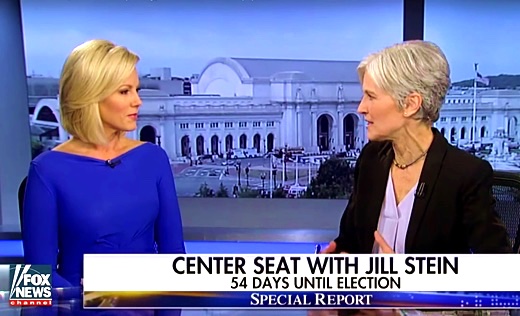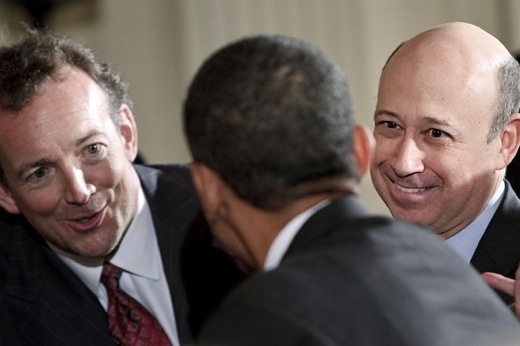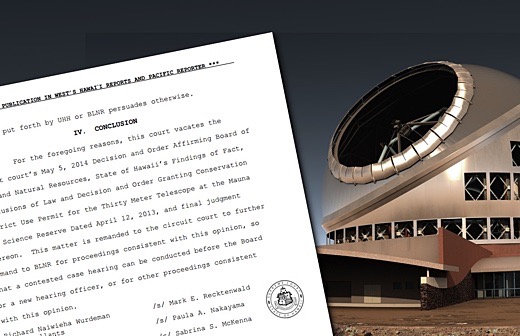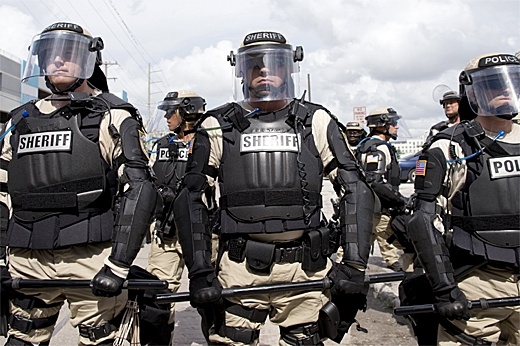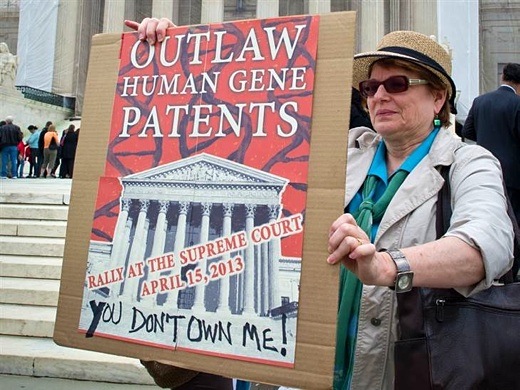SUBHEAD: Many Americans seem willing to accept, out of fear,
the death of the Bill of Rights, one amendment at a time.
By Peter Van Buren on 15 June 2014 for TomDispatch -
(
http://www.tomdispatch.com/post/175856/tomgram%3A_peter_van_buren%2C_rip%2C_the_bill_of_rights/)
 Image above: Men running for their lives as North Tower of World Trade Center collapses on 9/11/01. From (http://news.nationalgeographic.com/news/2011/09/pictures/110908-about-911-september-9-11-twin-world-trade-center-towers-indelible/).
Taking Down the First Amendment in Post-Constitutional America
Image above: Men running for their lives as North Tower of World Trade Center collapses on 9/11/01. From (http://news.nationalgeographic.com/news/2011/09/pictures/110908-about-911-september-9-11-twin-world-trade-center-towers-indelible/).
Taking Down the First Amendment in Post-Constitutional America
America has entered its third great era: the post-constitutional one. In the first, in the colonial years, a unitary executive, the King of England, ruled without checks and balances, allowing no freedom of speech, due process, or privacy when it came to protecting his power.
In the second, the principles of the Enlightenment and an armed rebellion were used to push back the king’s abuses. The result was a new country and a new constitution with a Bill of Rights expressly meant to check the government's power. Now, we are wading into the shallow waters of a third era, a time when that government is abandoning the basic ideas that saw our nation through centuries of challenges far more daunting than terrorism. Those ideas -- enshrined in the Bill of Rights -- are disarmingly concise. Think of them as the haiku of a genuine people's government.
Deeper, darker waters lie ahead and we seem drawn down into them. For here there be monsters.
The Powers of a Police State Denied
America in its pre-constitutional days may seem eerily familiar even to casual readers of current events. We lived then under the control of a king. (Think now: the imperial presidency.) That king was a powerful, unitary executive who ruled at a distance. His goal was simple: to use his power over “his” American colonies to draw the maximum financial gain while suppressing any dissent that might endanger his control.
In those years,
protest was dangerous. Speech could indeed make you the enemy of the government. Journalism could be a crime if you didn’t write in support of those in power. A citizen needed to watch what he said, for there were spies everywhere, including fellow colonists hoping for a few crumbs from the king's table. Laws could be brutal and punishments swift as well as extra-judicial. In extreme cases, troops
shot down those simply assembling to speak out.
Among the many offenses against liberty in pre-constitutional America, one pivotal event, the
Stamp Act of 1765, stands out. To enforce the taxes imposed by the Act, the king's men used "
writs of assistance" that allowed them to burst into any home or business, with or without suspicion of wrongdoing. American privacy was violated and property ransacked, often simply as a warning of the king’s power. Some colonist was then undoubtedly the first American to mutter, “But if I have nothing to hide, why should I be afraid?” He soon learned that when a population is categorically treated as a potential enemy, everyone has something to hide if the government claims they do.
The Stamp Act and the flood of kingly offenses that followed created in those who founded the United States a profound suspicion of what an unchecked government could do, and a sense that power and freedom are not likely to coexist comfortably in a democracy. A balancing mechanism was required. In addition to the body of the Constitution outlining what the new nation's government could do, needed was an accounting of what it
could not do. The answer was the Bill of Rights.
The Bill's
preamble explained the matter this way: “...in order to prevent misconstruction or abuse of [the government's] powers, that further declaratory and restrictive clauses should be added.” Thomas Jefferson
commented separately, "[A] bill of rights is what the people are entitled to against every government on earth."
In other words, the Bill of Rights was written to make sure that the new government would not replicate the abuses of power of the old one. Each amendment spoke directly to a specific offense committed by the king. Their purpose collectively was to lay out what the government could never take away. Knowing first-hand the dangers of a police state and unchecked power, those who wrote the Constitution wanted to be clear: never again.
It needs to be said that those imperfect men were very much of their era. They were right about much, but desperately wrong about other things. They addressed “humanity,” but ignored the rights of women and Native Americans. Above all, they did not abolish the institution of slavery, our nation’s Original Sin. It would take many years, and much blood, to begin to rectify those mistakes.
Still, for more than two centuries, the meaning of the Bill of Rights was generally expanded, though -- especially in wartime -- it sometimes temporarily contracted. Yet the basic principles that guided America were sustained despite civil war, world wars, depressions, and endless challenges. Then, one September morning, our Post-Constitutional era began amid falling towers and empty skies. What have we lost since? More than we imagine. A look at the Bill of Rights, amendment by amendment, tells the tale.
The First Amendment
"Congress shall make no law respecting an establishment of religion, or prohibiting the free exercise thereof; or abridging the freedom of speech, or of the press; or the right of the people peaceably to assemble, and to petition the Government for a redress of grievances."
The
First Amendment was meant to make one thing indisputably clear: free speech was the basis for a government of the people. Without a free press, as well as the ability to openly gather, debate, protest, and criticize, how would the people be able to judge their government's adherence to the other rights? How could people vote knowledgeably if they didn’t know what was being done in their name by their government? An informed citizenry, Thomas Jefferson
stated, was "a vital requisite for our survival as a free people."
That was how it was seen long ago. In Post-Constitutional America, however, the government strives to "control the message," to actively thwart efforts to maintain a citizenry informed about what’s done in its name, a concept that these days seems as quaint as Jefferson's powdered wig. There are far too many examples of the post-9/11 erosion of the First Amendment to list here. Let's just look at a few important ones that tell the tale of what we have lost since 9/11.
(Lack of) Freedom of Information
In 1966, an idea for keeping Americans better informed on the workings of their government was hatched: the Freedom of Information Act (
FOIA). Strengthened in 1974, it began with the premise that, except for some obvious
categories (like serious national security matters and personal information), the position of the government should be: everything it does is available to the public.
Like the Bill of Rights, which made specific the limits of government, FOIA began with a presumption that it was the government’s duty to make information available -- and quickly -- to the people, unless a convincing case could be made otherwise. The default position of the FOIA switch was set to ON.
Three decades later, the FOIA system works far differently. Agencies are generally loath to release documents of any sort and instead put their efforts into creating roadblocks to legitimate requests. Some still require signatures on paper. (The State Department
notes, “Requests for personal information cannot be submitted electronically and should be submitted by mail.”) Others demand hyper-detailed information like the precise dates and titles of documents whose dates and titles may be classified and unavailable. The NSA simply
denies almost all FOIA requests out of hand, absent a court order.
Most federal agencies now regard the
deadline mandated for a response as the time period to send out a “request received” note. They tend to assign only a few staff members to processing requests, leading to near-endless
delays. At the State Department, most FOIA work is done on a part-time basis by retirees. The CIA won’t directly release electronic versions of documents. Even when a request is fulfilled, “free” copying is often denied and reproduction costs exaggerated.
In some cases, the requested records have a way of disappearing or are simply
removed. The ACLU’s experience when it filed an FOIA-style request with the Sarasota police department on its use of the cell phone surveillance tool
Stingray could be considered typical. The morning the ACLU was to review the files, Federal Marshals arrived and physically took possession of them, claiming they had deputized the local cops and made the files federal property. An ACLU spokesperson
noted that, in other cases, federal authorities have invoked the
Homeland Security Act to prevent the release of records.
John Young, who runs the web site
Cryptome and is a steadfast FOIA requester,
stated, “Stonewalling, delay, brush-off, lying are normal. It is a delusion for ordinary requesters and a bitch of a challenge for professionals. Churning has become a way of life for FOIA, costly as hell for little results.”
Sealed Lips and the Whistleblower
All government agencies have regulations requiring employees to obtain permission before speaking to the representatives of the people -- that is, journalists. The U.S. Intelligence Community has among the
most restrictive of these policies, banning employees and contractors completely from talking with the media without prior authorization. Even speaking about unclassified information is a no-no that may cost you your job. A government ever more in lockdown mode has created what one journalist
calls a “culture where censorship is the norm.”
So who does speak to Americans about their government? Growing hordes of spokespeople, communications staff, trained PR crews, and those anonymous “senior officials” who pop up so regularly in news articles in major papers.
With the government obsessively seeking to hide or spin what it does, in-the-sunlight contact barred, and those inside locked behind an iron curtain of secrecy, the whistleblower has become the paradigmatic figure of the era. Not surprisingly, anyone who blows a whistle has, in these years, come under fierce attack.
Pick a case:
Tom Drake exposing early NSA efforts to turn its spy tools on Americans,
Edward Snowden proving that the government has us under constant surveillance,
Chelsea Manning documenting war crimes in Iraq and sleazy diplomacy everywhere,
John Kiriakou acknowledging torture by his former employer the CIA, or
Robert MacLean revealing Transportation Safety Administration malfeasance. In each instance, the threat of jail was quick to surface. The nuclear option against such truthtellers is the
Espionage Act, a law that
offended the Constitution when implemented in the midst of World War I. It has been resurrected by the Obama administration as a blunt “wartime” tool for silencing and punishing whistleblowers.
The Obama administration has already charged
six people under that act for allegedly mishandling classified information. Even Richard Nixon only invoked it once, in a failed prosecution against Pentagon Papers whistleblower
Daniel Ellsberg.
Indeed, the very word “espionage” couldn’t be stranger in the context of these cases. None of those charged spied. None sought to aid an enemy or make money selling secrets. No matter. In Post-Constitutional America, the powers-that-be stand ready to twist language in whatever Orwellian direction is necessary to bridge the gap between reality and the king's needs. In the Espionage Act case of State Department contractor
Stephen Kim, a judge
departed from previous precedent,
ruling that the prosecution need not even show that the information leaked to a Fox news reporter from a CIA report on North Korea could damage U.S. national security or benefit a foreign power. It could still be a part of an “espionage” charge.
A final question might be: How could a law designed almost 100 years ago to stop German spies in wartime have become a tool to silence the few Americans willing to risk everything to exercise their First Amendment rights? When did free speech become a crime?
Self-Censorship and the Press
Each person charged under the Espionage Act in these years was primarily a source for a journalist.
The writers of the Bill of Rights chose to include the term “press” in the First Amendment, specifically carving out a special place for journalists in our democracy. The press was necessary to question government officials directly, comment on their actions, and inform the citizenry about what its government was doing.
Sadly, as the Obama administration is moving ever more fiercely against those who might reveal its acts or documents, the bulk of the media have acquiesced. Glenn Greenwald said it
plainly: too many journalists have gone into a self-censoring mode, practicing "obsequious journalism."
For example, a survey of reporters
showed “the percentage of U.S. journalists endorsing the occasional use of ‘confidential business or government documents without authorization,’ dropped significantly from 81.8% in 1992 to 57.7% in 2013.” About 40% of American journalists would not have published documents like those Edward Snowden revealed.
And the same has been true of the management of newspapers. In mid-2004, James Risen and Eric Lichtblau
uncovered George W. Bush's illegal warrantless eavesdropping program, but the
New York Times held the story for
15 months, until after Bush's reelection. Executives at the
Times were told by administration officials that if they ran the story, they'd be helping terrorists. They accepted that. In 2006, the
Los Angeles Times similarly gave in to the NSA and
suppressed a story on government wiretaps of Americans.
Government Efforts to Stop Journalists
Reporters need sources. Increasingly, the government is classifying just about any document it produces --
92 million documents in 2011 alone. Its intelligence agencies have even
classified reports about the over-classification of documents. As a result, journalistic sources are often pressed into discussing, at great personal risk,
classified information. Forcing a reporter to reveal such sources discourages future whistleblowing.
In one of the first of a series of attempts to make journalists reveal their sources, former Fox News reporter
Mike Levine stated that the Justice Department persuaded a federal grand jury to subpoena him in January 2011. The demand was that he reveal his sources for a 2009
story about Somali-Americans who were secretly indicted in Minneapolis for joining an al-Qaeda-linked group in Somalia. Levine fought the order and the Department of Justice finally dropped it without comment in April 2012. Call it a failed test case.
According to Washington lawyer Abbe Lowell, who defended Stephen Kim, significant amounts of time have been spent by the Department of Justice in the search for a legal rationale for indicting journalists for their participation in exposing classified documents. A crucial test case is James Risen's 2006 book,
State of War, which had an anonymously sourced chapter on a failed CIA operation to disrupt Iran’s nuclear program.
When Risen, citing the First Amendment,
refused to identify his source or testify in the trial of the
former CIA officer accused of being that source, the government sought to imprison him. He
responded that the.
“Obama administration... wants to use this case and others like it to intimidate reporters and whistleblowers. But I am appealing to the Supreme Court because it is too dangerous to allow the government to conduct national security policy completely in the dark.”
In June 2014, the Supreme Court
refused to take Risen's case on appeal, essentially ratifying a U.S. Court of Appeals
decision that the First Amendment didn’t protect a reporter from being forced to testify about “criminal conduct that the reporter personally witnessed or participated in.” That decision makes clear that a reporter receiving classified information from a source is part of the crime of “leaking.”
Risen has said he will go to prison rather than testify. It is possible that, having secured the precedent-setting right to send Risen to jail, the government will bring the suspected leaker to trial without calling on him. Attorney General Eric Holder recently
hinted that his Justice Department might take that path -- a break for Risen himself, but not for reporters more generally who now know that they can be jailed for refusing to divulge a source without hope of recourse to the Supreme Court.
The Descent Into Post-Constitutionalism
As with the King of England once upon a time, many of the things the government now does have been approved in secret, sometimes in
secret courts according to a secret body of law. Sometimes, they were even approved openly by Congress. In constitutional America, the actions of the executive and the laws passed by Congress were only legal when they did not conflict with the underlying constitutional principles of our democracy.
Not any more. “Law” made in secret, including pretzeled legal interpretations by the Justice Department for the White House, opened the way, for instance, to the use of
torture on prisoners and in the Obama years to the
drone assassination of Americans. Because such “legalities” remain officially classified, they are, of course, doubly difficult to challenge.
But can’t we count on the usual pendulum swings in American life to change this? There were indeed notable moments in American history when parts of the Constitution were put aside, but none are truly comparable to our current situation. The Civil War lasted five years, with Lincoln's suspension of habeas corpus limited in geography and robustly
contested. The World War II Japanese internment camps
closed after three years and the persecuted were a sub-set of Japanese-Americans from the West Coast. Senator McCarthy’s notorious career as a communist-hunter lasted four years and ended in
shame.
Almost 13 years after the 9/11 attacks, it remains “wartime.” For the war on terror, the driver, excuse, and
raison d'être for the tattering of the Bill of Rights, there is no end in sight. Recently retired NSA head Keith Alexander is typical of key figures in the national security state when he
claims that despite, well, everything, the country is at greater risk today than ever before. These days, wartime is forever, which means that a government working ever more in secret has ever more latitude to decide which rights in which form applied in what manner are still inalienable.
The usual critical history of our descent into a post-constitutional state goes something like this: in the panic after the 9/11 attacks, under the leadership of Vice President Dick Cheney with the support of President George W. Bush, a cabal of top government officials pushed through legal-lite measures to (as they liked to say) “
take the gloves off” and allow
kidnapping,
torture,
illegal surveillance, and
offshore imprisonment along with
indefinite detention without charges or trial.
Barack Obama, elected on a series of (false) promises to roll back the worst of the Bush-era crimes, while rejecting torture and closing America’s overseas “black sites,” still pushed the process forward in his own way. He expanded executive power, emphasized drone assassinations (including against American citizens), gave amnesty to torturers, increased government secrecy, targeted whistleblowers, and heightened surveillance. In other words, two successive administrations lied, performed legal acrobatics, and bullied their way toward a kind of absolute power that hasn’t been seen since the days of King George. That's the common narrative and, while not wrong, it is incomplete.
Missing Are the People
One key factor remains missing in such a version of post-9/11 events in America: the people. Even today,
45% of Americans, when polled on the subject, agree that torture is “sometimes necessary and acceptable to gain information that may protect the public.”
Americans as a group seem unsure about whether the NSA's global and domestic surveillance is justified, and many remain convinced that Edward Snowden and the journalists who published his material are
criminals. The most common meme related to whistleblowers is still “patriot or traitor?” and toward the war on terror, “security or freedom?”
It’s not that Americans are incorrect to be fearful and feel in need of protection. The main thing we need to protect ourselves against, however, is not the modest domestic threat from terrorists, but a new king, a unitary executive that has taken the law for its own, aided and abetted by the courts, supported by a powerful national security state, and unopposed by a riven and weakened Congress.
Without a strong Bill of Rights to protect us -- indeed, secure us -- from the dangers of our own government, we will have gone full-circle to a Post-Constitutional America that shares much in common with the pre-constitutional British colonies.
Yet there is no widespread, mainstream movement of opposition to what the government has been doing. It seems, in fact, that many Americans are willing to accept, perhaps even welcome out of fear, the death of the Bill of Rights, one amendment at a time.
We are the first to see, in however shadowy form, the outlines of what a Post-Constitutional America might look like. We could be the last who might be able to stop it.
• Peter Van Buren blew the whistle on State Department waste and mismanagement during Iraqi reconstruction in his first book, We Meant Well: How I Helped Lose the Battle for the Hearts and Minds of the Iraqi People. A TomDispatch regular, he writes about current events at his blog We Meant Well. His new book, Ghosts of Tom Joad: A Story of the #99Percent, is available now. In future pieces at TomDispatch he will consider other amendments being dismantled in the post-9/11 era.
.